Launching today is one of the more exciting features that we have seen recently for a HPE server. Marvell NativeRAID is a NVMe RAID solution that is designed specifically to mirror SSDs. This is something we have been waiting a long time for as we first highlighted the Marvell 88NR2241 at OCP Summit 2018. Now, Marvell has built a solution around the controller for HPE ProLiant servers.
Marvell NativeRAID NVMe RAID Solution
For the segment Marvell is aiming at, the problem statement is relatively simple. Companies want to use NVMe SSDs instead of legacy SATADOMs, front hot-swap bay drives or SATA M.2 drives. SATADOMs are expensive for their capacity but do not take up drive bays. Front hot-swap bays are too valuable to use with their connected RAID controllers for boot drives. SATA SSDs cost virtually the same for less performance.
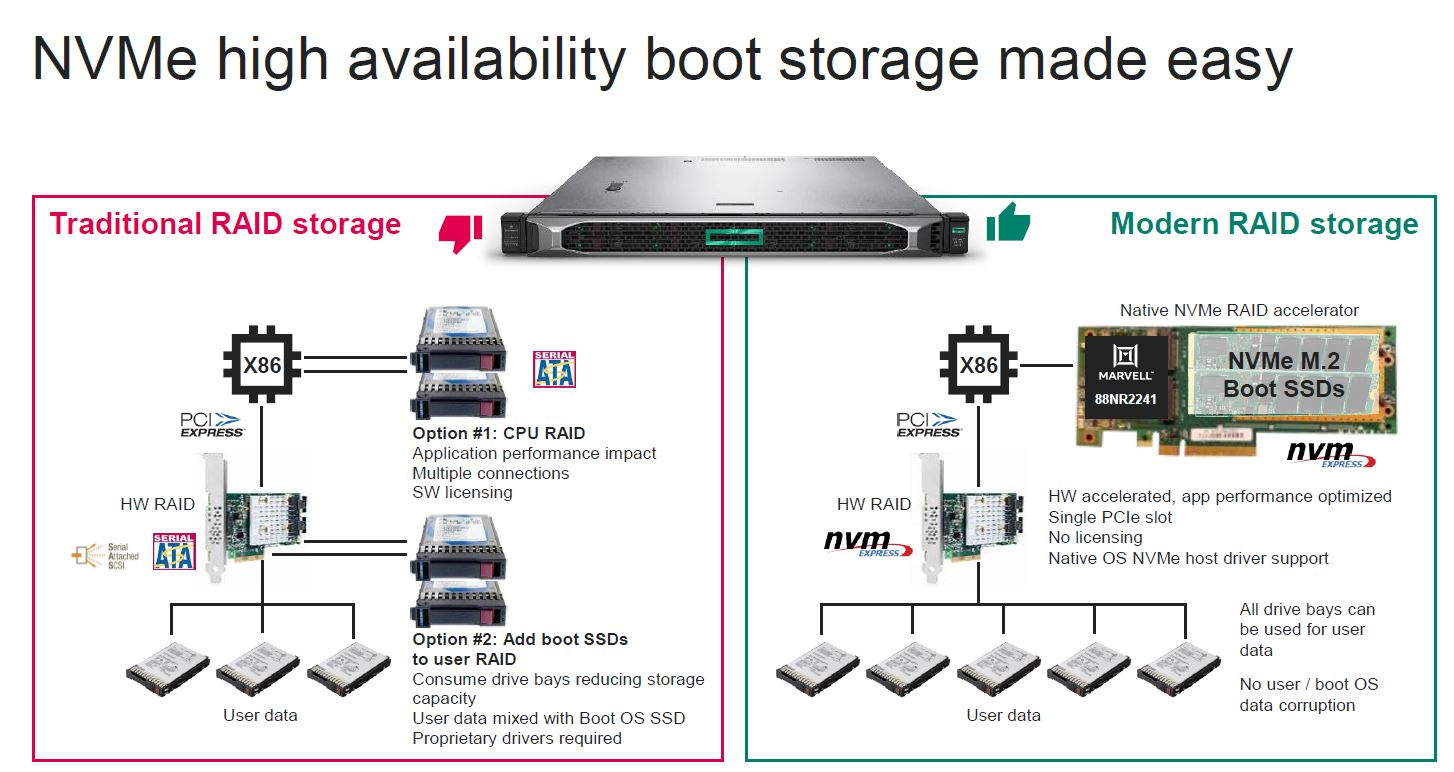
Marvell is using the 88NR2241 to deliver RAID solutions to boot devices. Specifically, a device can be added to a PCIe slot and two M.2 drives can be put into RAID 1 or 0. Our sense is that the majority of these solutions are going to use RAID 1 for mirroring.
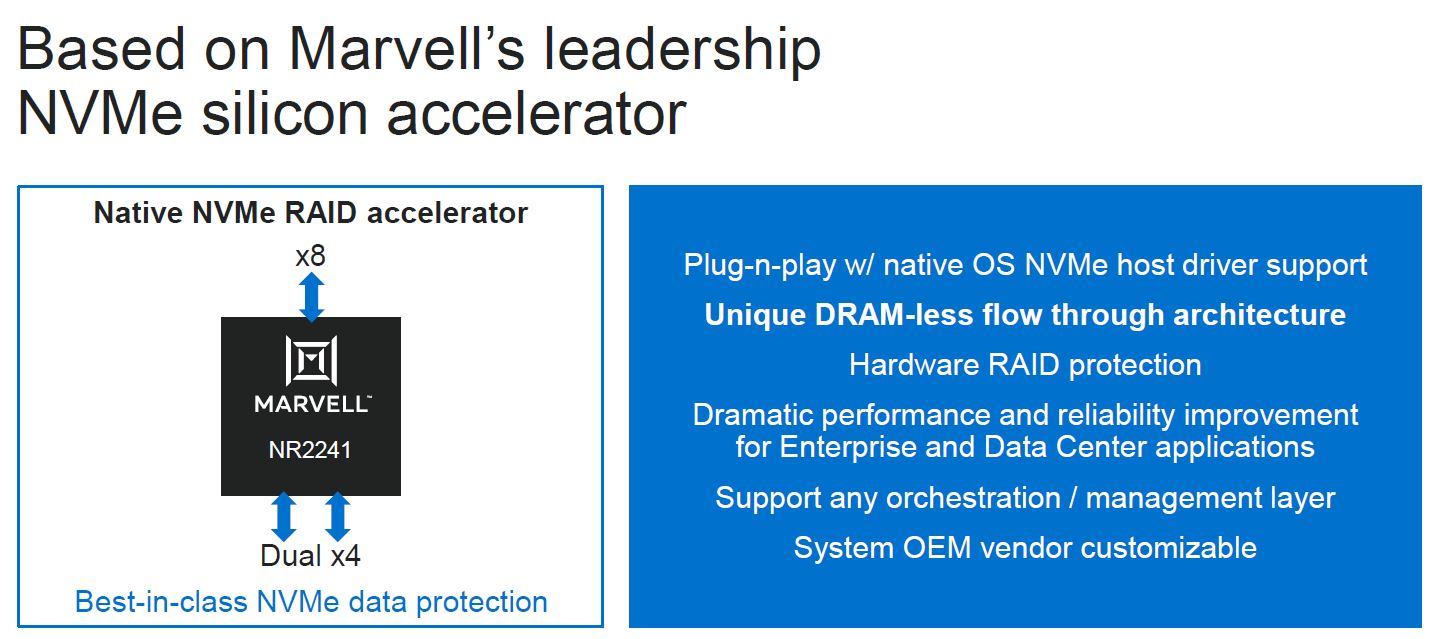
The RAID controller is a DRAM-less controller that lowers costs compared to Tri-mode controllers. They can also be less expensive than VROC licenses which do not work with all drives on Intel platforms. A solution like this can also work across Intel Xeon and AMD EPYC solutions such as the HPE ProLiant ML350 Gen10 and ProLiant DL325 Gen10 we reviewed.
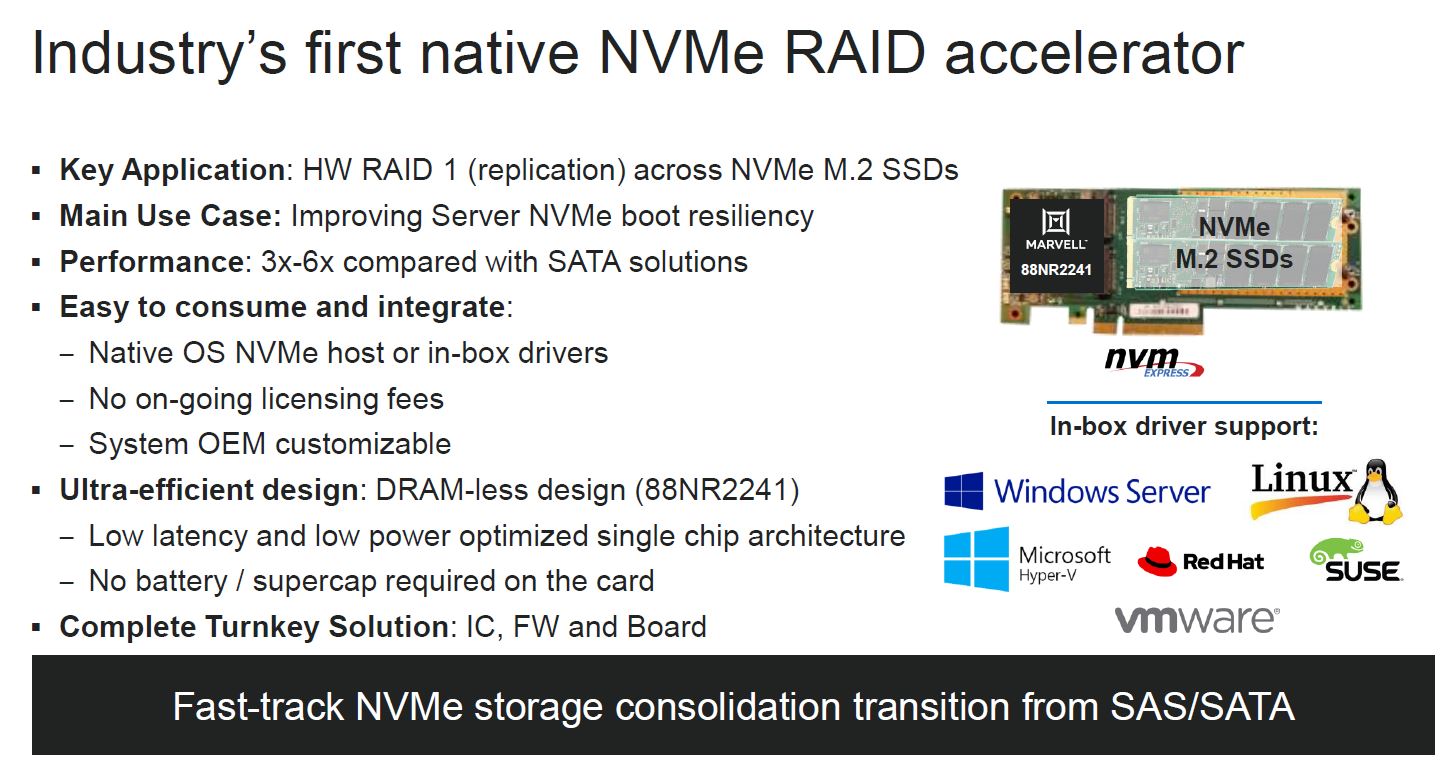
Marvell is highlighting its first shipping native NVMe RAID solution for HPE ProLiant (P/N: P12965-B21) because Marvell did more than just design the chip. Marvell also designed the board as well as the iLO integration on the software side delivering a fairly turn-key solution for HPE. This type of solution is something that Marvell is trying to highlight at a corporate level.
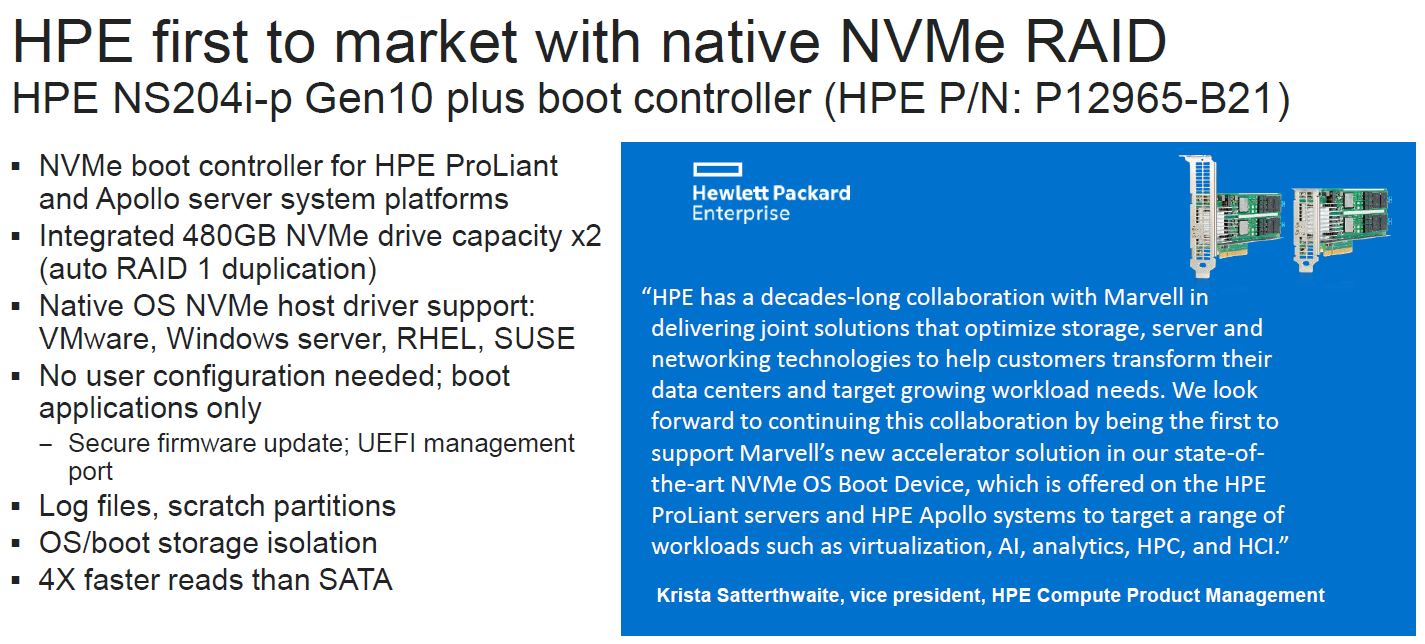
We were told the cards can support up to M.2 22110 NVMe SSDs in the HPE solution. That allows for larger 110mm drives with power-loss protection (or PLP) onboard. This combined with the more reliable SSD form factor (versus hard drives) means that it is practical to use internal slots for SSD RAID instead of using hot-swap front panel bays.
Final Words
Marvell SATA RAID controllers are also found in servers from many other vendors, not just HPE. We see this as a feature that will come to solutions like the Dell BOSS and other servers in the not too distant future. As the price delta between SATA and NVMe has been effectively eliminated for M.2 drives, it is only a matter of time until this happens across the industry. The HPE-Marvell NativeRAID solution is the first step in that direction.

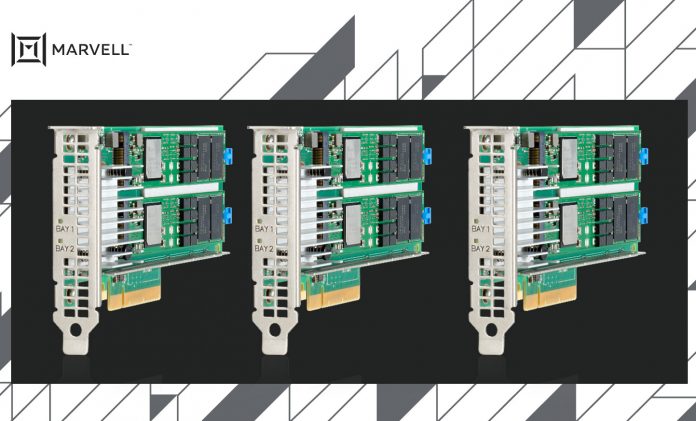



How is this different that a Dell BOSS card? Marvell claims “first!” throughout the marketing but the concept is old and Dell has been selling these for a couple years. What’s the distinction that Marvell thinks is unique?
Pretty sure Dell BOSS card is AHCI only.
From what i see Dell Boss card will be seen in OpenManage just like regular Raid Card so you can config Raid on it.
@Jonathan, maybe i am missing something, but as far as i know Dell’s BOSS is M.2 SATA, not NVMe…
Dell’s BOSS is SATA. This is NVMe. It’s called out in the article that Dell isn’t there yet
Thanks for the replies, folks.
Still sucks that you need to take down the system to replace a failed NVMe M.2, they should have made it eject-able from the back side. My #1 complaint with Dell BOSS cards…
interesting also:
https://highpoint-tech.com/USA_new/Marvell_NVMe_OEMODM.htm
highpoint manufactures NVMe RAID controllers too.
Since the primary fail method for SSDs is hitting the write limit, and both drives in RAID 1 are going to hit the limits at approximately the same time, this seems like a fairly useless solution IMHO.
It’s nice option card. Seems everything all soldered.
I’m sure there is somewhere out there a pice card with 2./ Ports for raid 1.
HighPoint have had bootable RAID NVME cards for quite a while so not sure HPE are first with this.
IDC about boot drive thing. Decent NVMe RAID is hard to get in the non server world. As an AIC for TR or desktop it looks attractive. Maybe a version without ILO, even the full x16 lanes?
In the good old legacy BIOS days a bootable raid 1 software raid could be had easily on Linux. UEFI made that a pain. Not sure if it has been fixed on some distributions or if UEFI can handle a secondary system partion at all.
Hans Henrik Happe. I don’t understand why UEFI would be a problem at all. Normally you boot kernel and initrd from an UEFI boot loader (elilo,grub,whatever) and the kernel would mdadm assemble the raid array before pivot_rooting into its newly assembled raid rootfs and resume booting ? The uefi ESP partition however would/should never be a part of this software raid setup.
If the disk with the ESP partition fails you cannot boot.
The HPE product code is only listed in a graphic. Can’t we have some text to copy/paste a search? A product link would be better, if it is even available separately.
I’ll wait for a non-branded model anyway.
I’m a big fan of RAID and use it for a number of my servers and NAS that have hard drives. While RAID support is nice to have even for NVMe, IMO, it’s not as critical as using RAID for hard drive-based systems, given that NVMe is less likely to have crashes as hard drives. Still, NVMe RAID would be nice to have, but this particular item costs way too much $$ for my needs (even at 31% off, which I saw online, it costs way too much from what I’ve seen online). I suppose some enterprises won’t balk at the price, but a bit too costly for my needs.